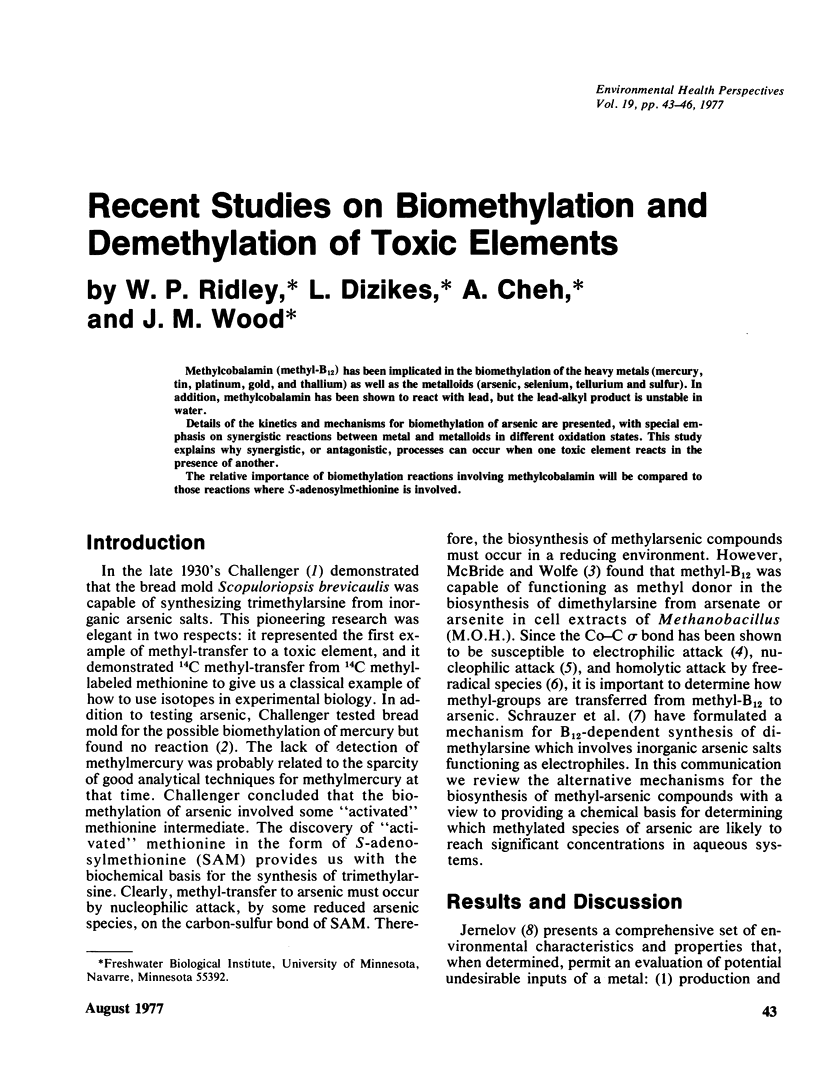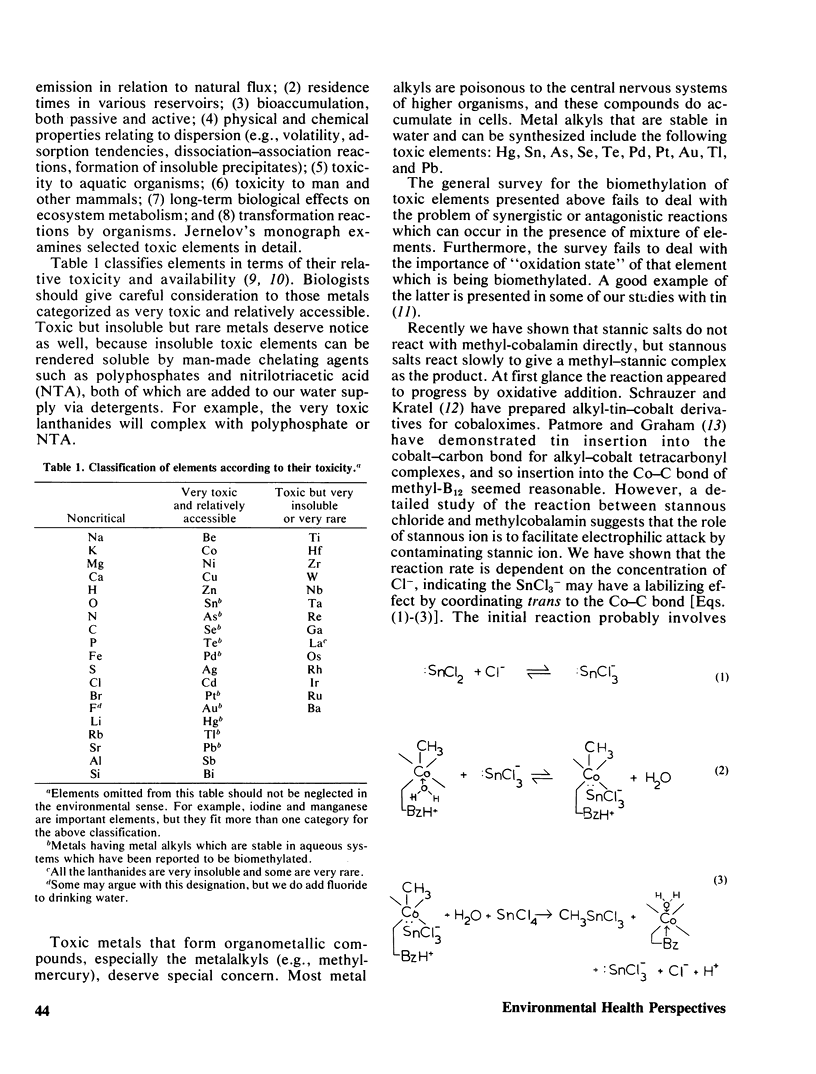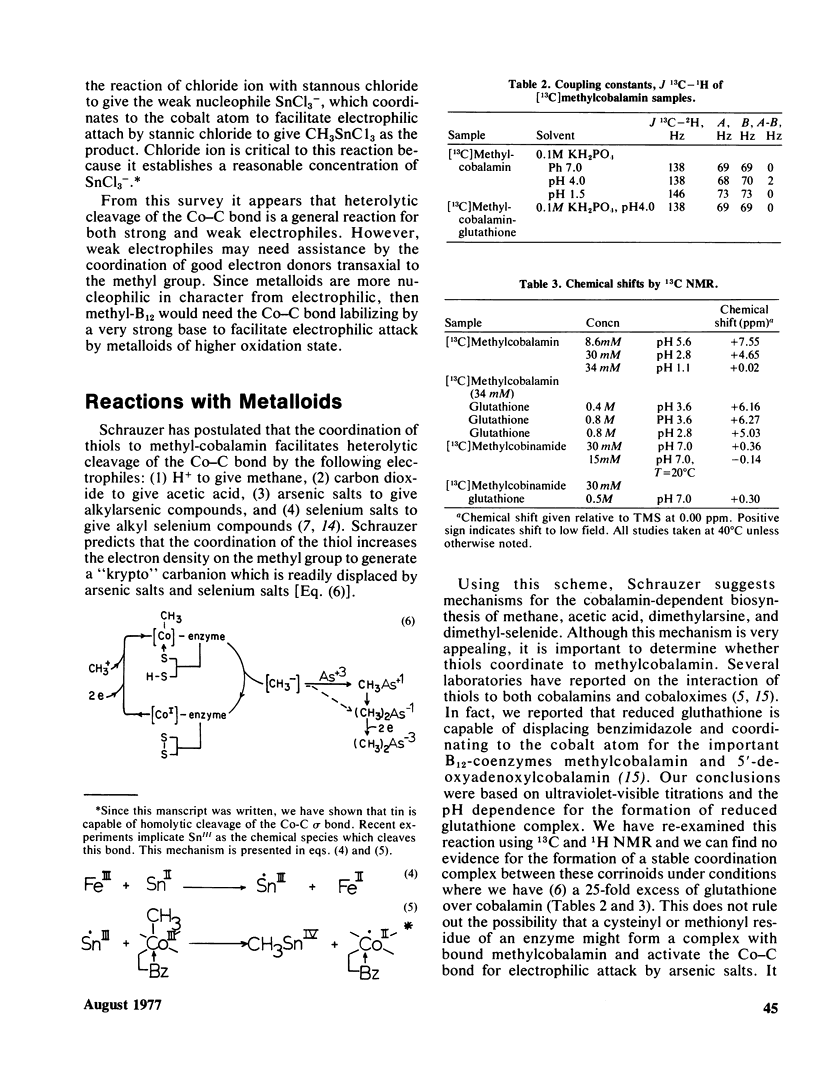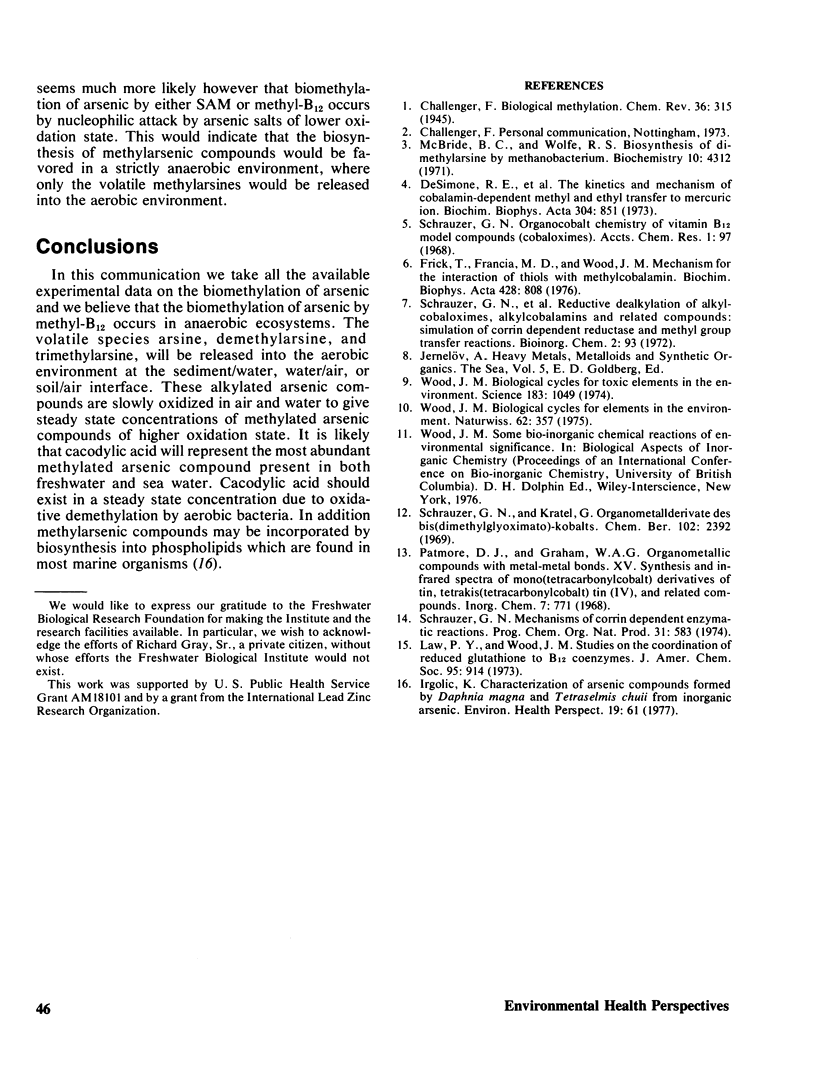Abstract
Methylcobalamin (methyl-B12) has been implicated in the biomethylation of the heavy metals (mercury, tin, platinum, gold, and thallium) as well as the metalloids (arsenic, selenium, tellurium and sulfur). In addition, methylcobalamin has been shown to react with lead, but the lead-alkyl product is unstable in water. Details of the kinetics and mechanisms for biomethylation of arsenic are presented, with special emphasis on synergistic reactions between metal and metalloids in different oxidation states. This study explains why synergistic, or antagonistic, processes can occur when one toxic element reacts in the presence of another. The relative importance of biomethylation reactions involving methylcobalamin will be compared to those reactions where S-adenosylmethionine is involved.
Full text
PDF



Selected References
These references are in PubMed. This may not be the complete list of references from this article.
- DeSimone R. E., Penley M. W., Charbonneau L., Smith S. G., Wood J. M., Hill H. A., Pratt J. M., Ridsdale S., Williams R. J. The kinetics and mechanism of cobalamin-dependent methyl and ethyl transfer to mercuric ion. Biochim Biophys Acta. 1973 May 28;304(3):851–863. doi: 10.1016/0304-4165(73)90232-8. [DOI] [PubMed] [Google Scholar]
- Frick T., Francia M. D., Wood J. M. Mechanism for the interaction of thiols with methylcobalamin. Biochim Biophys Acta. 1976 May 28;428(3):808–817. doi: 10.1016/0304-4165(76)90212-9. [DOI] [PubMed] [Google Scholar]
- Irgolic K. J., Woolson E. A., Stockton R. A., Newman R. D., Bottino N. R., Zingaro R. A., Kearney P. C., Pyles R. A., Maeda S., McShane W. J. Characterization of arsenic compounds formed by Daphnia magna and Tetraselmis chuii from inorganic arsenate. Environ Health Perspect. 1977 Aug;19:61–66. doi: 10.1289/ehp.771961. [DOI] [PMC free article] [PubMed] [Google Scholar]
- Law P. Y., Wood J. M. Studies on the coordination of reduced glutathione to B 12 coenzymes. J Am Chem Soc. 1973 Feb 7;95(3):914–919. doi: 10.1021/ja00784a047. [DOI] [PubMed] [Google Scholar]
- McBride B. C., Wolfe R. S. Biosynthesis of dimethylarsine by Methanobacterium. Biochemistry. 1971 Nov;10(23):4312–4317. doi: 10.1021/bi00799a024. [DOI] [PubMed] [Google Scholar]
- Schrauzer G. N. Mechanisms of corrin dependent enzymatic reactions. Fortschr Chem Org Naturst. 1974;31(0):583–628. doi: 10.1007/978-3-7091-7094-6_10. [DOI] [PubMed] [Google Scholar]
- Wood J. M. Biological cycles for toxic elements in the environment. Science. 1974 Mar 15;183(4129):1049–1052. doi: 10.1126/science.183.4129.1049. [DOI] [PubMed] [Google Scholar]


